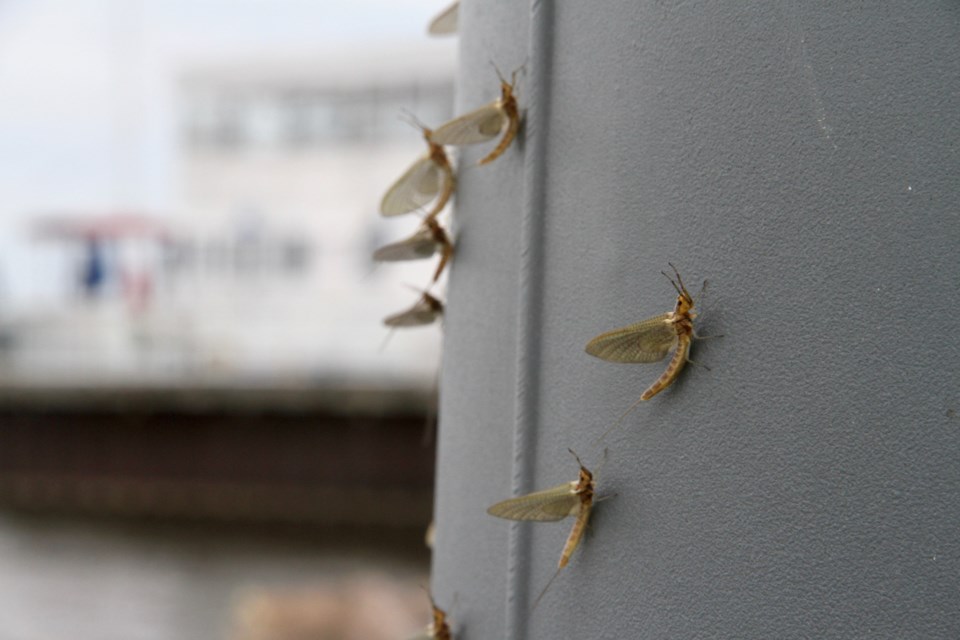They are lined up in droves at the North Bay & District Multicultural centre and hundreds are sitting patiently for the opening of the small carousel on the waterfront.
That’s a lot of activity for downtown and the North Bay waterfront on a cool Monday morning.
However, the unique little downtown residents overwhelming the local Multicultural Centre are not from another country they are from the warm waters of Lake Nipissing.
Devin Currie has been working at the North Bay Marina on the north shores of Lake Nipissing for four years.
He says the clusters today are just the tip of the iceberg.
“It’s coming, give it another week,” said Currie.
“It’s like clock work, when it’s rainy and cool you don’t see them as much but when it gets sunny and warms up that’s when the swarms really come out of the lake."
And it really is like clock work, as the Shadflies traditionally emerge from the lake in late June and early July.
If you don't already know the smelly bugs have no mouths and are harmless. The bad news is for fishermen, as the Shad's make for a tasty fish treat and with the bugs coming out in masses, it's a buffet that area fish don't miss out on.
Some people in the North Bay area are literally allergic to the Shad Fly season.
See that story: Shadfly season literally sickens local woman
The good news is that a good crop of Shadflies is an indication of a healthy Lake Nipissing.
Science North says the Shad’s, also known as Mayflies, have a very short life on land and they come out in the swarms because they are not good flyers and cannot escape predators.
"They have evolved a strategy to ‘evade’ predators,” stated Science North’s Bruce Doran.
"The adults will time their emergence at the same time so that millions of them will appear. This essentially overwhelms predators, which cannot eat all the mayflies, and therefore many of the insects survive.
"The role of adult mayflies is to mate and lay eggs before they die. In fact, adult mayflies do not have mouthparts and die several days after they have emerged."
The Shad’s are not the only insect over populating the area as forest tent caterpillars emerge. Experts say they are part of a natural cycle.
See that story: Forest tent caterpillars invade the north and shads are back



